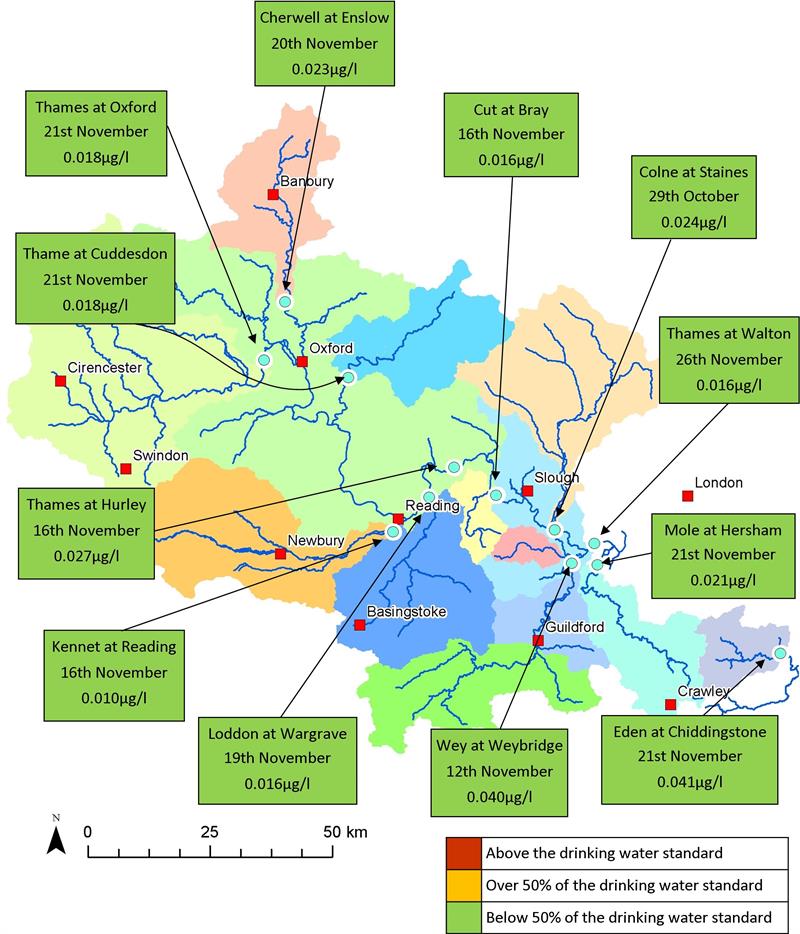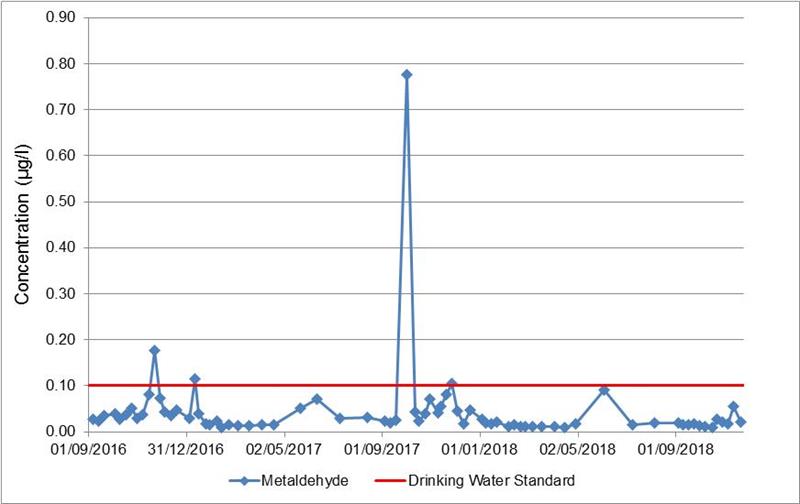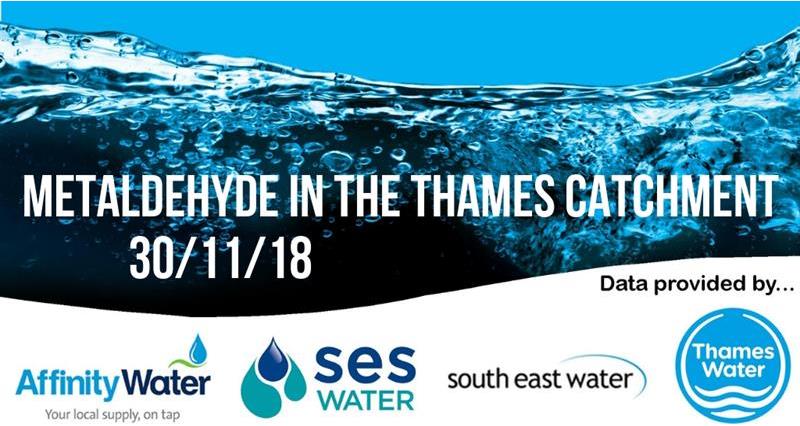Metaldehyde in the catchment
This autumn consider reducing reliance on chemical control measures by adopting a wider range of options in your Integrated Pest Management (IPM) programme to control slug numbers. If you need to use chemical control, please consider the use of ferric phosphate pellets instead of metaldehyde pellets and, as always, follow best practice guidelines. In some areas there are water company funded initiatives available to support you, so contact your local water company to find out more. Please note that contact details can be found at the bottom of this update.
Please see the map and graph below for 12 monitoring locations within the Thames catchment.
Latest Results
The latest results show that metaldehyde concentrations have decreased at 7 of the 12 sites this week. The lower metaldehyde concentrations are likely due to the lack of rainfall last week when compared with to the previous week. Soils have now wetted up in many places across the catchment and some field drains are running. With further rain forecast over the next few weeks there is a risk that metaldehyde from recent applications could be mobilised. If you need to make any further slug pellet applications in the coming weeks please consider water protection, and, as always, follow best practice guidelines (www.getpelletwise.co.uk).

Focus on… Mole at Hersham
Concentrations in the River Mole at Hersham reached 0.777µg/l during autumn 2017, almost eight times the drinking water standard. This is the highest recorded metaldehyde concentration in the Mole since monitoring began in 2012. So far this autumn concentrations have remained below the drinking water standard, although a small peak of 0.055µg/l was recorded on 12th November following multiple days of rainfall.

To find out more please contact:
Affinity Water: Q2F0Y2htZW50TWFuYWdlbWVudEBhZmZpbml0eXdhdGVyLmNvLnVr, SES Water: Y2F0Y2htZW50QHNlc3dhdGVyLmNvLnVr, South East Water: Y2F0Y2htZW50QHNvdXRoZWFzdHdhdGVyLmNvLnVr or Thames Water: Y2F0Y2htZW50Lm1hbmFnZW1lbnRAdGhhbWVzd2F0ZXIuY28udWs=
